Cost-effectiveness of medical primary prevention strategies to reduce absolute risk of cardiovascular disease in Tanzania: a Markov modelling study
- PMID: 27184802
- PMCID: PMC4869389
- DOI: 10.1186/s12913-016-1409-3
Cost-effectiveness of medical primary prevention strategies to reduce absolute risk of cardiovascular disease in Tanzania: a Markov modelling study
Abstract
Background: Cardiovascular disease (CVD) is a growing cause of mortality and morbidity in Tanzania, but contextualized evidence on cost-effective medical strategies to prevent it is scarce. We aim to perform a cost-effectiveness analysis of medical interventions for primary prevention of CVD using the World Health Organization's (WHO) absolute risk approach for four risk levels.
Methods: The cost-effectiveness analysis was performed from a societal perspective using two Markov decision models: CVD risk without diabetes and CVD risk with diabetes. Primary provider and patient costs were estimated using the ingredients approach and step-down methodologies. Epidemiological data and efficacy inputs were derived from systematic reviews and meta-analyses. We used disability- adjusted life years (DALYs) averted as the outcome measure. Sensitivity analyses were conducted to evaluate the robustness of the model results.
Results: For CVD low-risk patients without diabetes, medical management is not cost-effective unless willingness to pay (WTP) is higher than US$1327 per DALY averted. For moderate-risk patients, WTP must exceed US$164 per DALY before a combination of angiotensin converting enzyme inhibitor (ACEI) and diuretic (Diu) becomes cost-effective, while for high-risk and very high-risk patients the thresholds are US$349 (ACEI, calcium channel blocker (CCB) and Diu) and US$498 per DALY (ACEI, CCB, Diu and Aspirin (ASA)) respectively. For patients with CVD risk with diabetes, a combination of sulfonylureas (Sulf), ACEI and CCB for low and moderate risk (incremental cost-effectiveness ratio (ICER) US$608 and US$115 per DALY respectively), is the most cost-effective, while adding biguanide (Big) to this combination yielded the most favourable ICERs of US$309 and US$350 per DALY for high and very high risk respectively. For the latter, ASA is also part of the combination.
Conclusions: Medical preventive cardiology is very cost-effective for all risk levels except low CVD risk. Budget impact analyses and distributional concerns should be considered further to assess governments' ability and to whom these benefits will accrue.
Keywords: Cardiovascular disease; Cost-effectiveness analysis; Diabetes; Markov modelling; Primary prevention; Societal perspective; Sub-Saharan Africa; Tanzania.
Figures

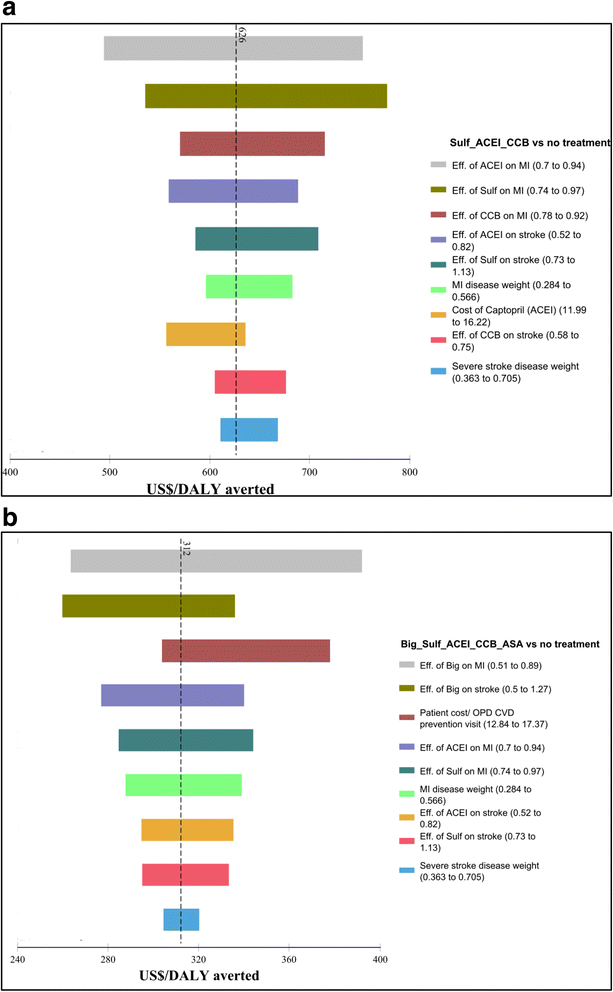
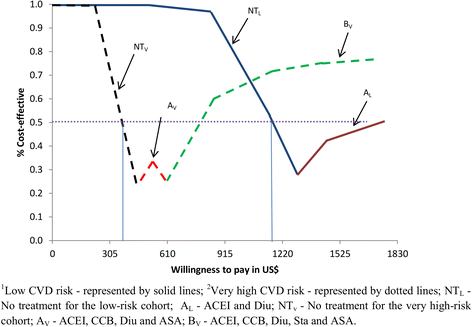
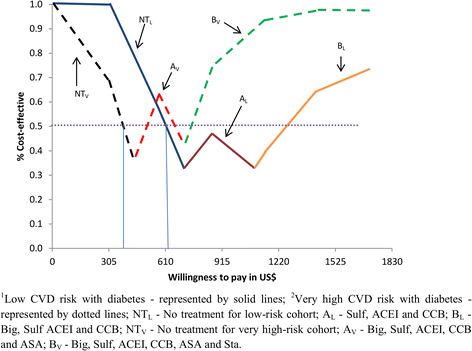

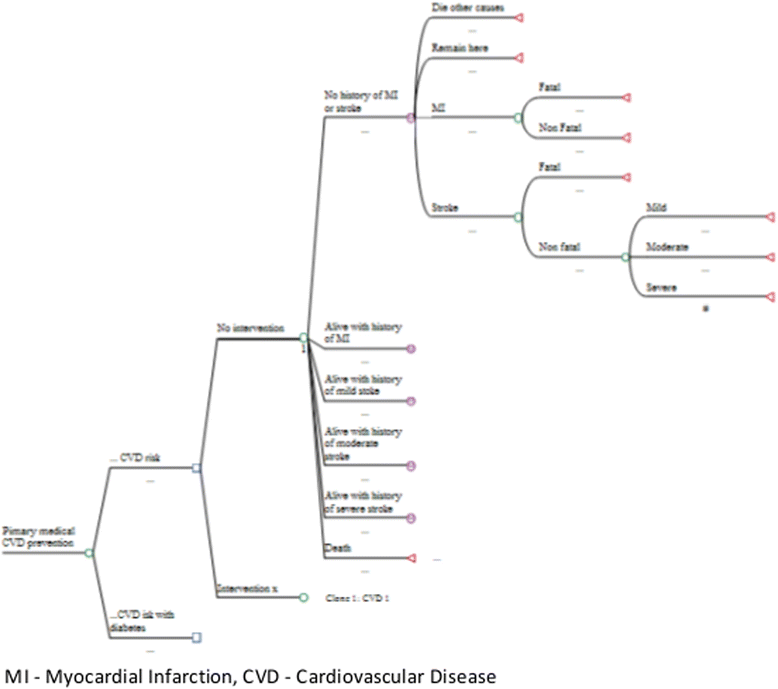
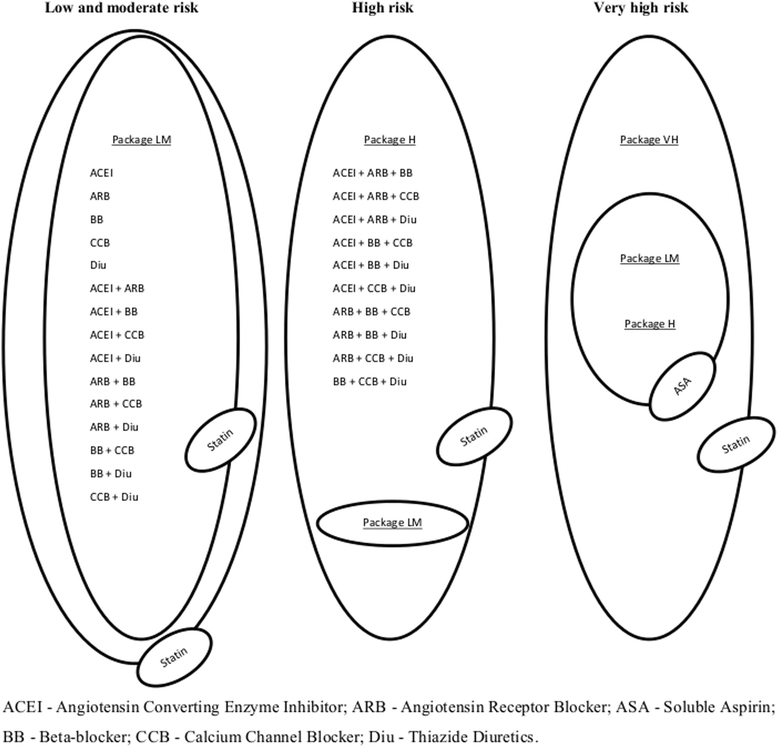
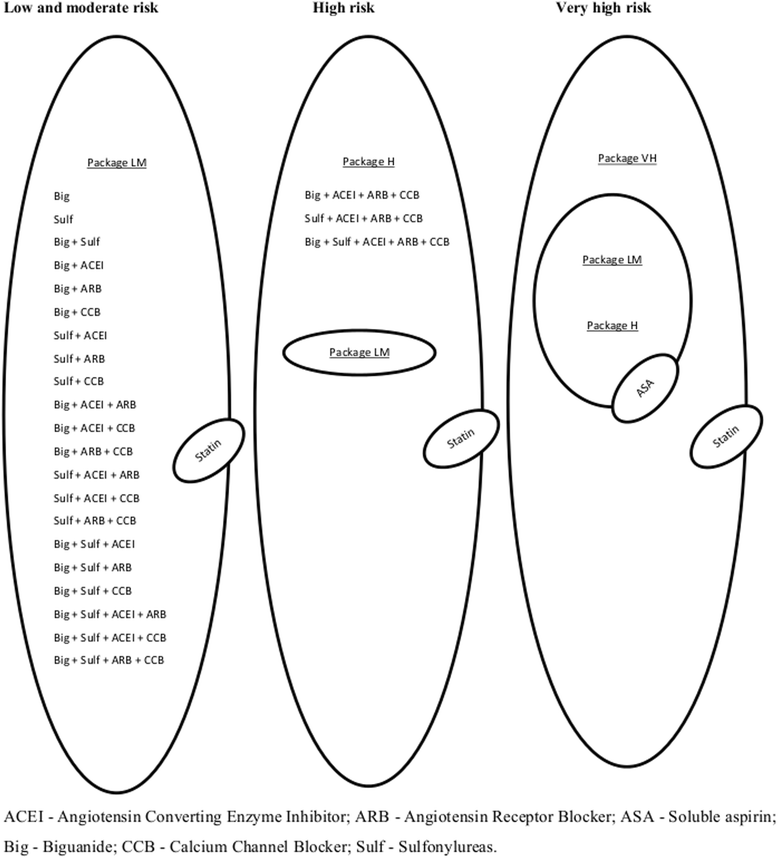
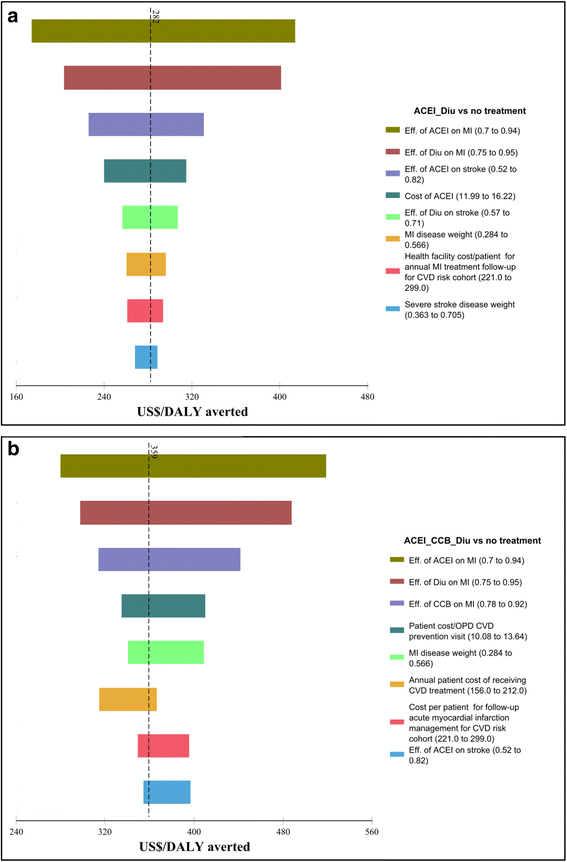
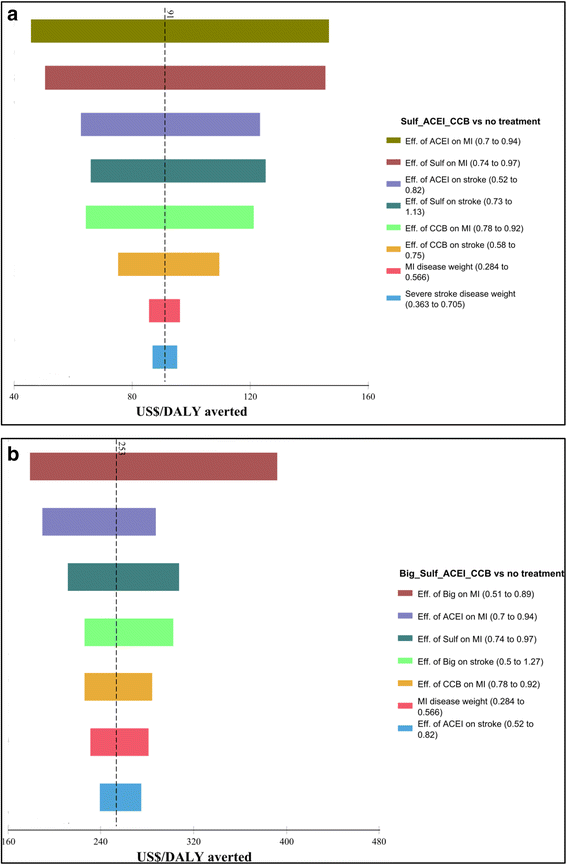
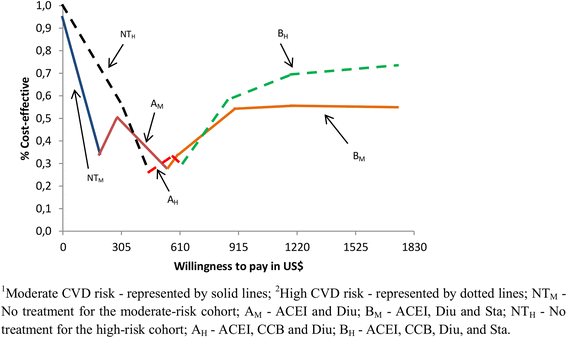

Similar articles
-
Results of a Markov model analysis to assess the cost-effectiveness of statin therapy for the primary prevention of cardiovascular disease in Korea: the Korean Individual-Microsimulation Model for Cardiovascular Health Interventions.Clin Ther. 2009 Dec;31(12):2919-30; discussion 2916-8. doi: 10.1016/j.clinthera.2009.12.013. Clin Ther. 2009. PMID: 20110032
-
Cardiovascular disease prevention with a multidrug regimen in the developing world: a cost-effectiveness analysis.Lancet. 2006 Aug 19;368(9536):679-86. doi: 10.1016/S0140-6736(06)69252-0. Lancet. 2006. PMID: 16920473 Free PMC article. Review.
-
Usefulness of a Cardiovascular Polypill in the Treatment of Secondary Prevention Patients in Spain: A Cost-effectiveness Study.Rev Esp Cardiol (Engl Ed). 2017 Jan;70(1):42-49. doi: 10.1016/j.rec.2016.05.009. Epub 2016 Jul 26. Rev Esp Cardiol (Engl Ed). 2017. PMID: 27474481 English, Spanish.
-
Cost-effectiveness of a cardiovascular disease primary prevention programme in a primary health care setting. Results of the Polish part of the EUROACTION project.Kardiol Pol. 2013;71(7):702-11. doi: 10.5603/KP.2013.0157. Kardiol Pol. 2013. PMID: 23907903
-
How cost-effective are new preventive strategies for cardiovascular disease?Am J Cardiol. 2003 May 22;91(10A):22G-27G. doi: 10.1016/s0002-9149(03)00229-7. Am J Cardiol. 2003. PMID: 12781905 Review.
Cited by
-
Developing a Sustainable Cardiovascular Disease Research Strategy in Tanzania Through Training: Leveraging From the East African Centre of Excellence in Cardiovascular Sciences Project.Front Cardiovasc Med. 2022 Mar 25;9:849007. doi: 10.3389/fcvm.2022.849007. eCollection 2022. Front Cardiovasc Med. 2022. PMID: 35402575 Free PMC article. Review.
-
Pharmaceutical intervention for hypertension in a rural district of the Republic of Zambia: a model-based economic evaluation.BMJ Open. 2024 Sep 5;14(9):e084575. doi: 10.1136/bmjopen-2024-084575. BMJ Open. 2024. PMID: 39237286 Free PMC article.
-
Primary and secondary prevention interventions for cardiovascular disease in low-income and middle-income countries: a systematic review of economic evaluations.Cost Eff Resour Alloc. 2018 Jun 14;16:22. doi: 10.1186/s12962-018-0108-9. eCollection 2018. Cost Eff Resour Alloc. 2018. PMID: 29983644 Free PMC article. Review.
-
Prevention of non-communicable disease: best buys, wasted buys, and contestable buys.BMJ. 2020 Jan 28;368:m141. doi: 10.1136/bmj.m141. BMJ. 2020. PMID: 31992592 Free PMC article.
-
Cost-effectiveness analysis of population salt reduction interventions to prevent cardiovascular disease in Cameroon: mathematical modelling study.BMJ Open. 2020 Nov 24;10(11):e041346. doi: 10.1136/bmjopen-2020-041346. BMJ Open. 2020. PMID: 33234652 Free PMC article.
References
-
- Institute of Health Metrics and Evaluation. Global Heath Data Exchange - GBD Compare University of Washington, Seattle, WA, USA: 2013 [cited 2014 December].
-
- Bloom DE, Cafiero ET, Jané-Llopis E, Abrahams-Gessel S. The Global Economic Burden of Noncommunicable Diseases. Geneva: World Economic Forum; 2011.
MeSH terms
Substances
LinkOut - more resources
Full Text Sources
Other Literature Sources

